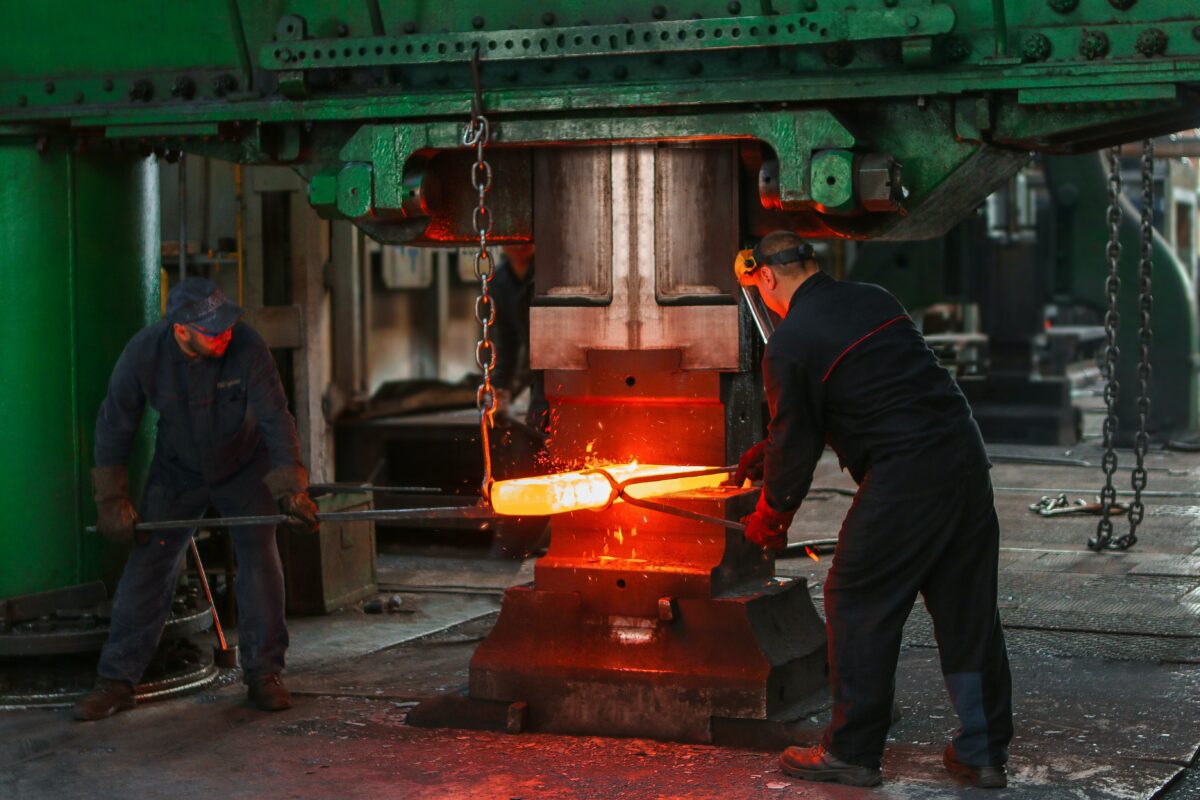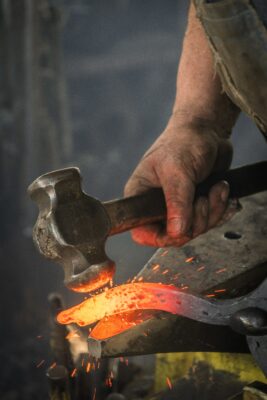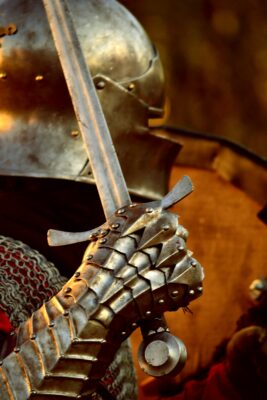Without steel no kitchen knives, no cooking utensils and also no industrial development that enables us today to engrave knife blades using laser marking.
Knife steel
Steel is iron with a low carbon content. Steel can be formed hot or cold, so it can be forged, bent, rolled and drawn. The most used and applied steel is an iron-carbon alloy with a maximum carbon content of 2 percent.
History
But where does the steel come from?
The starting material is iron. People have known iron since the second millennium BC. So we’ve been living in the Iron Age for four thousand years. The earliest smelting, i.e. melting and casting of iron, is known from the Hittite Empire. In the middle of the first millennium, the Hittites managed to carburize iron and thus produce forgeable steel.
It is only when there is a certain amount of carbon in iron that iron becomes steel. Before that it is brittle and cannot be hardened, which is crucial for knives and weapons.
Racing Furnace
For this purpose, the pig iron, which was initially found mostly as meteorite pieces, was melted in a race furnace. Rennöfen are simple shaft kilns that are walled up or built directly from loam or clay. The Rennofen is one to one and a half meters high. It acts like a chimney sucking in air from below. In order to reach the high melting temperature of 1250 degrees, the furnace was heated with charcoal. The fire was fanned further with bellows, mostly bags made of animal skin. The coal brought the desired amount of carbon into the molten iron. The first steel was born.
The Iron Age thus replaces the Copper Age. Steel weapons and knives were far superior to copper or bronze blades in terms of hardness and elasticity.
At the beginning of the Iron Age, the raw material was often a mixture of meteorite iron and iron oxides such as bog iron. The high temperature required to liquefy iron properly has not yet been reached in the kilns. The quality of the weapon was only achieved from the pig iron shell through multiple reforging and repeated glowing in the charcoal.
Furnace
It was not until the fourteenth century that better iron smelting developed.
The invention of the blast furnace, still charcoal fired at the time, achieved higher temperatures with less charcoal consumption. The high temperature and the alloying of iron with carbon made it possible to completely liquefy iron. The steel obtained in this way could be forged, carburized and hardened by quenching, i.e. rapid cooling in water.
Industrialization
Little by little, man made the earth’s raw materials accessible. Iron ore and hard coal were mined in mines. Large blast furnaces were built. Water power could be used to drive hammer mills in the forges.
In the early days of industrialization, more and more blast furnaces could be fired. The necessary raw materials iron ore, coal and coke could be brought in via rivers and canals and by railroad.
Large quantities of high quality steel could be produced. The basis of steam and machine tools or weapons and a prerequisite for a variety of steel structures such as bridges and modern wonders of the world such as the Eiffel Tower.
Steel moved into the household.
Knives, kitchen and chef’s knives, choppers, ovens, pokers and much more have become reliable helpers in the household.
Steelmaking
At the end of the nineteenth century, two methods were developed to produce even better steel.
The steel is refined using the Bessemer and Siemens-Martin processes. This means that air is blown through the melt at far higher temperatures than the melting point of pig iron. Excess carbon is removed from the alloy. At the same time, unwanted admixtures are burned off by the addition of oxygen. This reduces the content of silicon, manganese, sulfur and phosphorus.
Electric steel
In the middle of the twentieth century, the processes described were replaced by electric steel. This steel is melted in an electric arc furnace. Such a furnace can generate temperatures of over 3000 degrees. Air is not blown through the steel from below in the electric furnace. Oxygen is blown in from above using a cooled lance. At the same time, Argon is blown in through nozzles in the floor. This reduces the so-called steel pest hydrogen in the melt. An even higher quality steel can be produced in quantities of up to 380 tons in one melt.
For us as Kitchen Knife Enthusiasts and Blade Engravers< /a> there is still a decisive step to be taken towards a high-quality, profit-ready chef’s knife. The development of stainless steel.
More on this in part 2
3D Laser Gravur für Messer by TYPEMYKNIFE®



